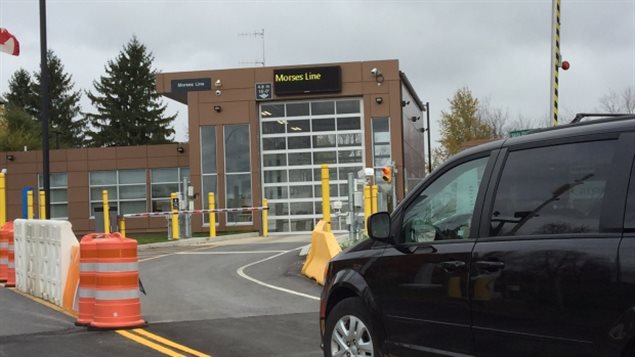The border crossing at Morses Line is a tiny operation that’s gone high tech to handle the traffic in slow periods. Described as a “sleepy border crossing” with fewer than 60 vehicles a day, there was a proposal at one point to close it down.
Now the Canada Border Services Agency (CBSA) is testing new technology that could be the standard for border control at small and remote crossings across the country.
Critics say the experiment is a threat to public safety.
Once proudly described as “the longest undefended border in the world”, there was even growing talk of an open border. But the September 11th attacks in New York City in 2001, ended all that.
This automation can only take place with the crash-proof gates and fenced in entrances and exits that were built in the wake of 9/11. After 4 p.m. the Morses Line crossing from the state of Vermont on the U.S. side, into the province of Quebec in Canada, operates without a border guard in person.
Non-commercial travellers drive into a garage equipped with cameras that are operated by a border agent 700 kilometres away, in Hamilton, Ontario.
“The person in Hamilton has complete control of the port of entry,” Claudia Rosetti, a superintendent for the CBSA explained to the CBC’s Alison Northcott.
“They have access to the same systems in order to make the verification as if the office were open, and the officer were on site.”
This pilot project began last January, and since then travellers have driven up to a kiosk, equipped with a microphone, document readers and a camera.
From Hamilton, the border agent can ask questions, zoom in to inspect the vehicle, and in the case of a problem, border officers are dispatched from the nearest crossing, 13 kilometres away.
The union representing border guards is opposed to the automated transformation.
“You’re talking about the first line of defence of this country here, so you are leaving that to a camera,” Jean-Pierre Fortin, the national president for the Customs and Immigration Union said.
“It certainly jeopardizes the security.”
For Réal Pelletier, mayor of nearby Saint-Armand, Quebec, the project is a life-saver. “[The technology] will never replace a human being, but having that or a closed border or a reduced hours border, I’ll choose that 100 per cent,” he said.
Over 4,000 travellers crossed the border using the automated system since it launched, the CBSA says.
The pilot phase will end in January 2017. Then the CBSA will assess the project and determine if it should be expanded.







For reasons beyond our control, and for an undetermined period of time, our comment section is now closed. However, our social networks remain open to your contributions.